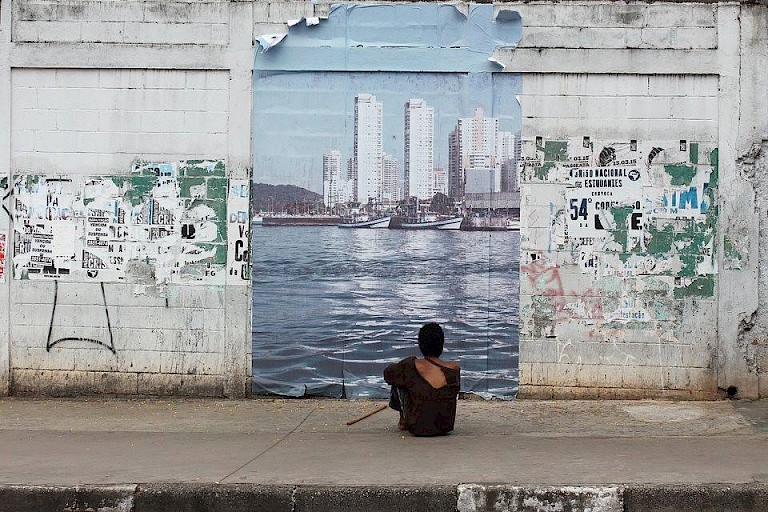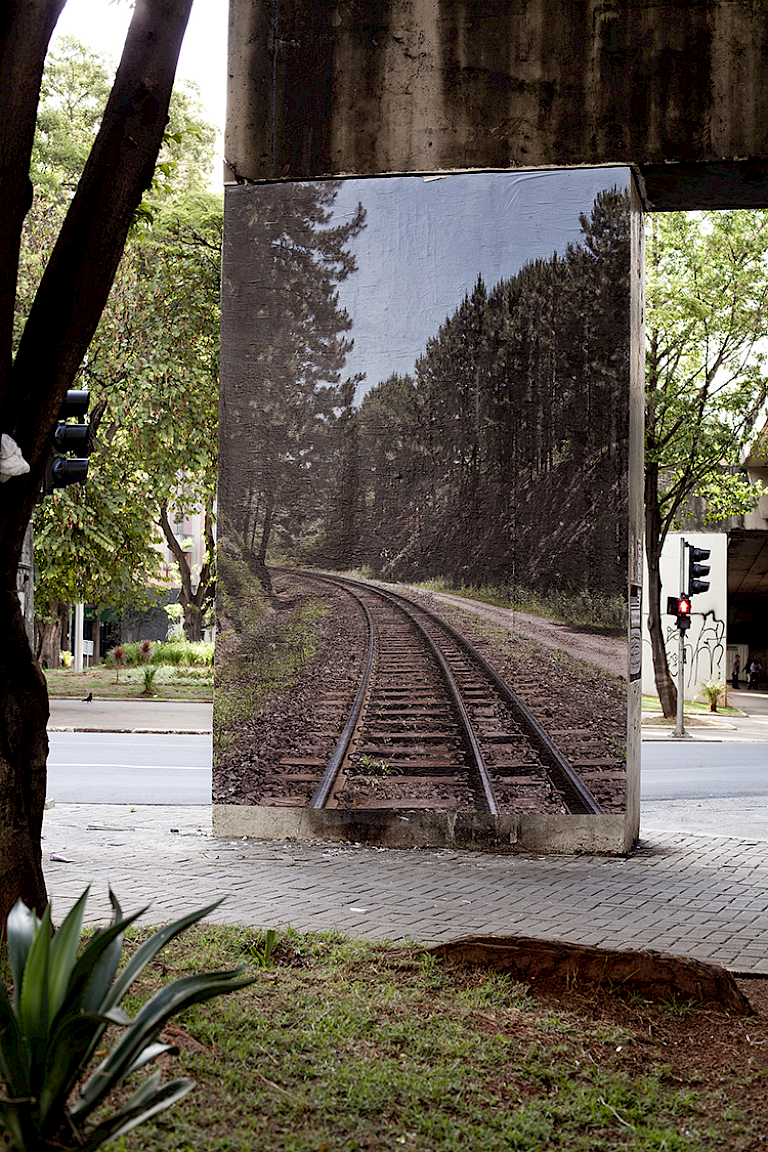



Designed by Collective Garapa, which is formed by journalists and photographers Leo Caobelli Paul Fehlauer and Rodrigo Marcondes, and now has an extensive network of partners and employees, the goal is to think and produce visual narratives by integrating the media and language, thinking the image and the documentary language as hybrid fields of expertise, exploiting this potential both in the construction of narratives and in their mode of production and distribution. However, within this space dialog, whose every wheat-paste proposes a new perspective to both look the work as the city, creates a contrast between tangible local and possible visions of a place in your reality has the characteristics imagined by the viewer, but are unknown by most.
To achieve this proposal, the group toured the city in search of landscapes that had little to do with the usual image of São Paulo. From Marsilac in southern extreme, for example, brought a bucolic train line falling on pine strips. In Cantareira, in the far north, a trail in the woods. The images of the application sites were chosen to allow the entire path to be traversed on foot or by bike, in order to promote the healthy and creative occupation of public spaces in the area. Each image is accompanied by a fact sheet, which includes the geographical coordinates of the photographed location, the map of the route and a QR-code, which takes the visitor to the image of the page on the project website.
As the works would not be withdrawn, the intention is that they they would discard with the action of time, usually as a work of urban art suffers. However, the goal of the team was not only accompanied by itself this period, but it was an opportunity for interaction with the public and that they could also be part of this observation, for this the Garapa requested that the public register the wheat-paste- in decomposition until the concrete back to predominate who photographed could send by e-mail so soon after it was published on the project website. Which it still keeps with the location information of the works carried out so far.
The project is an invitation for the public to look at the city differently and reinvent the imagery of the city of São Paulo associated with existing posts, but little known to those who are very popular, creating a new narrative.
To achieve this result was a mapping of places in São Paulo who owned a rural or natural landscape, which pegged the techniques that the group normally uses, could be printed in large format to be incorporated in contrasting spaces.
All copyright belongs to Shanghai Academy of Fine Arts, Shanghai University.


